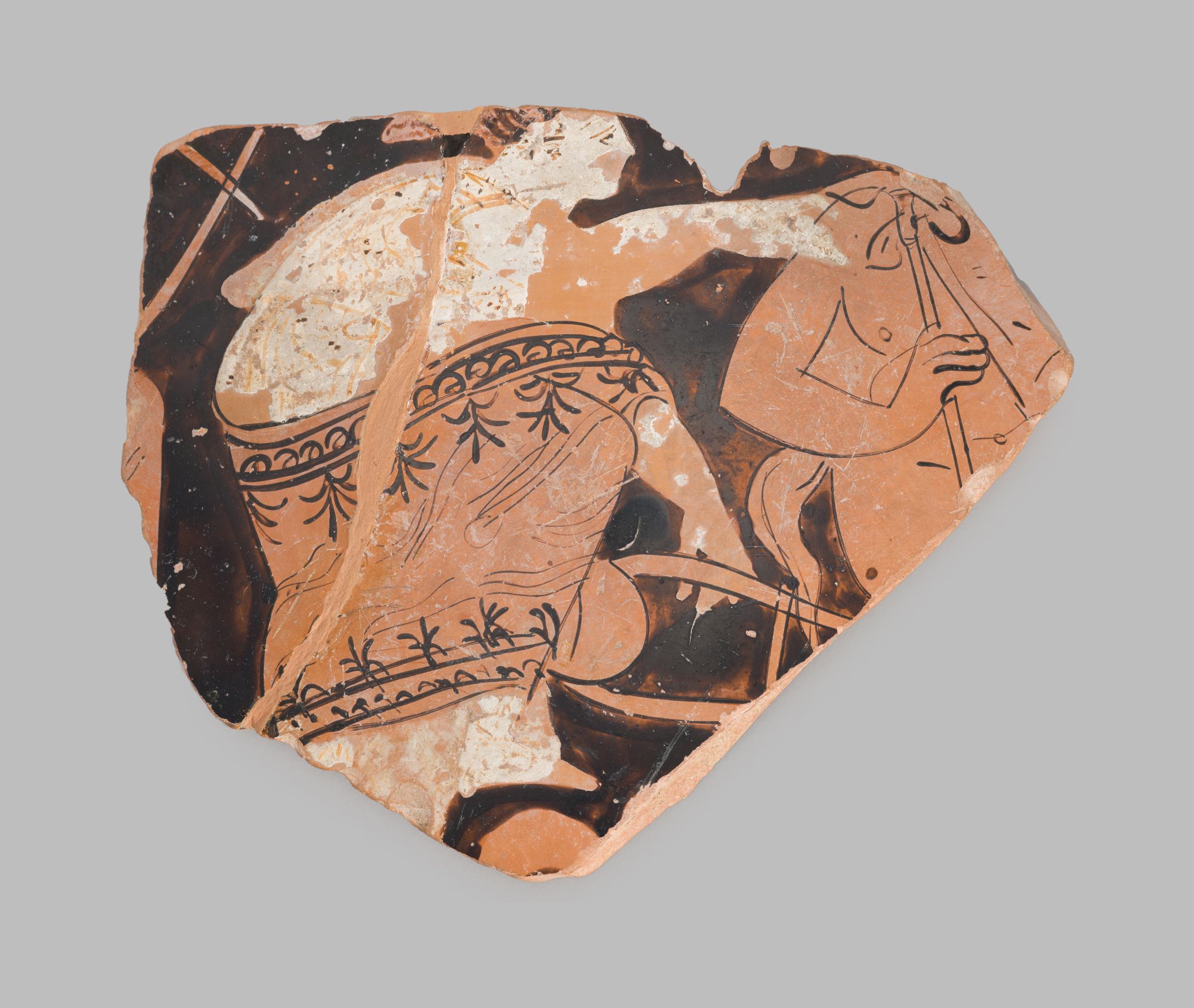
Fragment of a Bell Krater [Gr28]
Athenian Red-Figure, early 4th century BC
Painted terracotta (h. 11.4 cm, w. 14 cm), mended from two fragments
Marsyas with a muse, part of a third figure (possibly Apollo) on the right
This fragment shows the musical contest between Apollo and the satyr Marsyas. The draped figure in the centre is one of the muses (perhaps Terpsichore) holding a lyre. On the right is Marsyas, identifiable by his satyr’s tail and the pipe that he holds. He is almost certainly playing a diaulos (double pipe), but the other half of this was beyond the break; the line beside the pipe probably represents part of his clothing, perhaps an animal skin knotted round his neck. On the left is part of another figure holding a lyre, possibly Apollo.
These figures must have been part of a much more extensive scene. The fragment comes from a type of vase known as a Bell Krater, a large mixing bowl for wine and water in the shape of an upturned bell. There would have been space to show the whole story of Marsyas’ challenge to Apollo and the god’s terrible revenge.
The style of this fragment is typical of Athenian vase painting in the early 4th century, a period when the industry was in decline. The diaphanous folds of the drapery, the loose drawing, and the extensive use of white pigment, are all typical of the period.
Literature: J. Falconer and T. Mannack, Corpus Vasorum Antiquorum: Great Britain, Fascicule 19: Winchester College (Oxford, 2002), p. 10, plate 8.12; Winchester College Memorial Buildings: Department of Classical Art (Winchester, 1909), p. 22 (no. 75).
Provenance: Gift of B.J.M. Dumas before 1909
Location: Treasury, Gallery 3